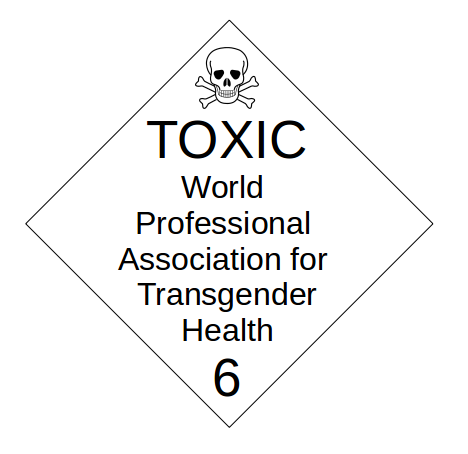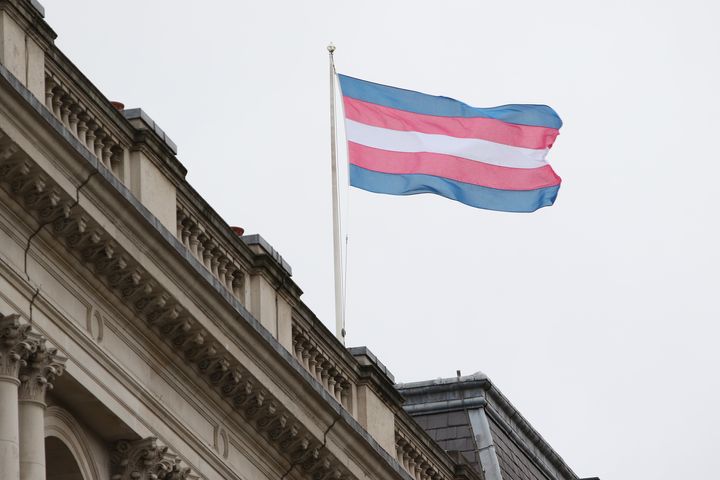Britney Spears vs. The People
How the life of one pop star reveals the deep-rooted culture of misogyny, where women can never win

That’s America for you,” replies an exhausted Britney Spears, after being accused of being a bad mother in 2006. It was the beginning of her mental breakdown, which occurred as a result of patriarchal surveillance throughout her whole life: by the male-dominated field of paparazzo, by misogynistic American society, by her family, and by the male gaze. The interview where Britney was accused of being a bad mother was with Matt Lauer, who has since been fired from NBC after a fellow employee alleged that he anally raped her.
The hypocrisy surrounding the case of Britney Spears is infuriating. Lauer’s Dateline interview was featured on The New York Times’ 2021 documentary Framing Britney Spears which, at the heart of it, depicts the way free-spirited, loving, hard-working Britney was trapped and caged by misogyny. While it’s important we address her father Jamie Spears’ conservatorship over her estate as the most literal form of patriarchal control in her life right now, Britney Spears’ story demonstrates an extreme example of how patriarchal societies victimize women and girls everywhere.
Women have been framed as “crazy” for protesting their oppressive predicament throughout history. According to The Atlantic, institutionalizing and/or caging women for speaking up, like Britney was, was especially prevalent in the mid-late 1800s, where “insane asylums served as catch-all facilities for violent and difficult women.” The article questions whether these women were “really criminals? Or even crazy? Or just rebelling against the social constraints of their time?” Once you dig, it’s usually the latter.
17-year-old Alice Christina Abbott poisoned her step father in 1867 and was deemed “insane” for doing so, despite saying she did it because he had repeatedly raped her since she was 13 years old and threatened to put her in reform school once she spoke up about it. She killed him to survive. The courts dismissed the justification. She was regarded as “mad” and was committed to a “lunatic asylum,” Taunton State Hospital. Caroll Smith-Rosenberg, expert on women’s history, told The Atlantic “psychiatrists during the Victorian era...specifically used medicine to police women’s behaviour...there were general feelings of what caused abnormal behaviour, and usually this was a refusal of traditional gender roles.”
"Britney’s mental breakdown was a result of her oppressive environment, not due to an innate psychological flaw. Until recently, she was consistently framed as the problem rather than the victim."
The case of Britney Spears reveals how women are still caged in a variety of ways when they defy the gendered expectations imposed upon them. Britney’s mental breakdown was a result of her oppressive environment, not due to an innate psychological flaw. Until recently, she was consistently framed as the problem rather than the victim.
Britney’s success was a capitalist dream for her working class parents from the Bible Belt. She was thrust in the spotlight at a young age. Her father, Jamie Spears, was optimistic the constant trips to New York would be worthwhile for the entire family. He is quoted on the documentary as saying “my daughter’s gonna be so rich she’s gonna buy me a boat.” Her father wasn’t around much when Britney was a child, he was an alcoholic, and started many different businesses that always failed. Eventually he filed for bankruptcy.
Britney was overtly sexualized once she made the stage at ten years old. After Spears performed Love Can Build a Bridge on Star Search in 1992, host Ed McMahon said “I noticed last week you have the most adorable, pretty eyes. Do you have a boyfriend?” Britney, clearly uncomfortable, said “No, sir.” When he asked “why not?” and she replied “boys are mean,” the host responded “boyfriends? You mean all boys are mean? I’m not mean, how about me?” From childhood, Britney Spears was deliberately made aware she was under predatory surveillance. Regardless of how beautiful her voice and ability to entertain were, her body and behaviour were the topic of conversation.
When Britney signed with Jive Records at age fifteen, she was branded as the “sexy” teenager. A backup dancer on Framing Britney Spears claimed Britney was always in control of what happened on stage but children don’t sexualize themselves. Britney was managed by adults. Rolling Stone’s 1999 cover story on Britney Spears, when she was just seventeen, was pedophilic. Steven Daly’s 2011 recap of the article is entitled: “Britney Spears, Teen Queen” followed by “Inside the Heart and Mind (and Bedroom) of Britney”:
“Britney Spears extends a honeyed thigh across the length of the sofa, keeping one foot on the floor as she does so. Her blond-streaked hair is piled high, exposing two little diamond earrings on each ear lobe; her face is fully made-up, down to carefully applied lip liner. The BABY PHAT logo of Spears’ pink T-shirt is distended by her ample chest, and her silky white shorts — with dark blue piping — cling snugly to her hips. She cocks her head and smiles receptively.”
This is pedophilic erotica. The photographs of Britney in her own bedroom while she holds stuffed toys and poses suggestively were viewed as her inviting objectification, because she “chose” to do the shoot. Despite Rolling Stone being aimed at a younger audience in the 1990s, Daly makes it clear he’s addressing older men— those too old to find Spears attractive— in the article:
“But hold on. It’s not like that. You’re falling into the same trap as the lovelorn youths who call Spears’ local florist to send her long-stemmed roses and the randy fellows outside the MTV studios with prom invites scrawled on their chests.”
Britney Spears was perceived as “baiting” men and was intentionally playing naive to it:
“Admittedly, that trap is carefully baited by a debut video that shows the seventeen-year-old singer cavorting around like the naughtiest of schoolgirls. But, as Spears points out, nothing is actually revealed. ‘All I did was tie up my shirt!’ she says.”
LaChapelle admits to persuading Britney’s consent: “you don’t want to be buttoned up, like Debbie Gibson...Let’s push it further and do this whole Lolita thing.” The photographs are taken in Britney Spears’ parents’ house in her hometown of Kentwood. Her mother is doing laundry in the living room. Britney is being coerced in the next room.
“If it weren’t for the diamond-laden tennis bracelet that Britney just bought her, you’d think her [Lynne’s] daughter was a vacationing college kid and not a pop sensation with an eleventh-grade education.”
Daly justifies the sexualization of seventeen year old Britney because she’s been persuaded to look “older.” But she doesn’t look older. The theme of the photographs is “Lolita,” originating in a story about a twelve-year-old girl who is preyed upon and kidnapped by an adult man. This is a pedophile’s fantasy. Not only is she supposed to look like a child, she’s supposed to secretly want sexual abuse to happen to her:
“The song that put Spears on top is a strutting statement of intent called ‘…Baby One More Time’ — and that ellipsis tells a tale. The three dots mask a chorus hook line — ‘Hit me, baby’ — that some have taken as a masochistic come-on. ‘It doesn’t mean physically hit me,” says Spears. “It means just give me a sign, basically. I think it’s kind of funny that people would actually think that’s what it meant.’”
This is the consequence of normalizing any kink because of “choice.” The pedophilic attraction to teenage girls has not gone away. I doubt Rolling Stone would get away with that cover story in 2021; now the vulturous magazines lick their lips and line the young girls up for when they turn eighteen. Today it’s worse: the internet makes “teen porn” available at all times.
Teen pornography is consistently one of the most popular pornography categories, along with “lesbian porn.” Videos of minors have frequently been found on Pornhub. Pornhub always managed to escape responsibility, winning countless legal battles, until Visa, Mastercard and Discover blocked all payments to the site, due to the widespread child abuse the site was riddled with. Then, miraculously, Pornhub did what they claimed was impossible: they took down all unverified pornography to get the cards back on board.
The treatment of Britney Spears paralleled the rise of digital pornography. She was one of the first celebrity teenagers to deal with the repercussions of the internet fetishizing minors. John Tierney, who studies the cultural impact of technology, claims that “the erotic has been a force driving technological innovation.” In 1997, a year before ...Baby One More Time was released, 18 percent of US households had the internet. In 2000, two years after the song was released, 41.5 percent of US households had the internet. Men were seeing their digital fantasy come to life through Britney. Porn encourages the idea that women and girls like to be preyed upon and hurt during sex. That’s why Daly asserted that ..Baby One More Time was about Britney’s “masochistic fantasies.”
"You don’t want to be buttoned up, like Debbie Gibson... Let’s push it further and do this whole Lolita thing."
The victim-blaming and predatory interviews intensified after the Rolling Stone’s cover story. When Britney was interviewed on the television show TROS, at seventeen, the Dutch interviewer said, “there’s one subject we didn’t discuss...Everyone’s talking about it.” When Britney asks what it is, he states “Well, your breasts.” In 1999, Eddy Zoey grabbed her feet, asked if she'd done “kissing tricks with boys,” and kissed her hand. Stegan Raab sang “the way you dance brings me joy, but you never fucked a boy...I love you so much baby and your silicone tits.” Conan O’Brien talked about her creepy fans (who stole dirt from her mother’s yard) but then spent a lot of time talking about her bare stomach. Mike Munro said on A Current Affair, “On the one hand, you’re a sweet, innocent virginal type. On the other hand, you’re a sexy vamp in underwear.” When she said she is never publicly “in underwear,” he refers to the Rolling Stone cover she did when she was only seventeen. The interviewers supported the narrative that Britney Spears was asking for sexual harassment.
Female interviewers weren’t any better. Britney kissed Madonna the year before her 2003 interview with Diane Sawyer, parts of which were on the documentary Framing Britney Spears. Sawyer said “with Madonna as her model, Britney Spears has upset a lot of mothers in the country.” Like Jo Jo Siwa, who recently came out as gay, responding with an “okay!” to upset mothers who now prevent their kids from watching her “ever again,” Britney reminded Sawyer that she is not responsible for babysitting children. Sawyer played a clip of Maryland’s first lady Kendel Ehrlich saying, “If I had an opportunity to shoot Britney Spears, I think I would.” Sawyer said it was justified, “because of the example for kids and how hard it is to be a parent and keep all of this away from your kids.” Instead of attacking the culture in which Britney Spears was sexualized since a child, Sawyer chose to blame Britney Spears for being a “bad role model” instead.
In 2002, Britney was blamed for the end of her relationship with Justin Timberlake, which was much-loved by the American public. In true misogynistic style, the documentary Framing Britney Spears unleashed the way Justin Timberlake controlled the narrative of the couples’ breakup in multiple ways, including his song Cry Me a River and constantly implying she “did something.” Timberlake has a pattern of evading any blame and throwing women under the bus. He was responsible for Janet Jackson’s breast being revealed during the 2004 Superbowl performance (two years after his breakup with Britney) and yet Jackson took accountability instead, essentially ending her career at it's peak. He is quoted as saying afterwards, “hey man, we love giving you all something to talk about.” Nevermind that Janet Jackson’s breast was exposed to 140 million people.
Despite Justin Timberlake airing their sex life on radio, something Spears wanted to keep secret—already being asked whether she was a virgin or not on television—Diane Sawyer said “[Justin Timberlake] has gone on television and pretty much said you broke his heart. You did something that caused him so much pain, so much suffering. What did you do?” Spears started crying, saying “Can we stop this?” Wesley Morris described Justin Timberlake’s post-breakup antics as “pure male revenge fantasy” in the documentary. The public ate it up.
Britney Spears’ fame also grew during the time of the Monica Lewinsky trial. Wesley Morris talks on the documentary about how women’s sexuality was topical at the time. Women and girls who were interpreted as “promiscuous” were shamed like never before.
Once Britney Spears and Kevin Federline got together in 2004, pictures of Britney would sell for a million dollars each. She tolerated the growing paparazzi attention in the beginning. However, there soon became a hunger for unposed photographs. If Britney saw it, if she wanted it, if she posed with a smile, if the photograph was consensual, then the shot wasn’t good enough anymore. Upskirt pictures were the ultimate paparazzo goal. This is rape culture.
"If Britney saw it, if she wanted it, if she posed with a smile, if the photograph was consensual, then the shot wasn’t good enough anymore."
The paparazzi only intensified once Britney announced her pregnancy. Once she gave birth, the paparazzi terrified Britney so much that she was caught driving with the baby on her lap because she didn’t feel safe taking her time strapping him in properly. Of course there is no justification for putting a child in danger, but she could barely get to her car without the paparazzi boxing her out. Britney gave up strictly adhering to the unattainable standard of perfected “beauty” once she had kids and Lynne Spears, Britney’s mother, wrote in her book that Britney had postpartum depression.
Britney experienced how terrifying being invaded on such a large scale was and wanted to protect her children from the limelight at all costs. The paparazzi vultures heard her scream “leave me alone” and cry, but that just egged them on. Britney wasn’t allowed to have boundaries because she was viewed as bringing the fame upon herself. She wasn’t allowed to back out. She was interviewed saying, “[my] biggest wish is for them [the paparazzi] to leave me alone.” She wasn’t protected as a child or teenager, from her parents or the public, and yet she was expected to be Mother Martyr. She explains that a lot of the anxiety that led to her breakdown was because she felt like she was disappointing everybody who had such strict expectations of her.
Like women during the Victorian period, Britney was viewed as some crazy madwoman who had an unexplainable mental break. There is nothing confusing about what caused Britney’s mental health to decline. It was a product of her environment.
Britney fought against the rigid expectations of her. The greatest purge came in the form of shaving her own head bald. In 2007, Britney Spears walked into a hairdressing salon as it was closing and asked them to shave her head clean. When they refused, Britney picked up the hair clippers and started doing it herself. The paparazzi continued taking photographs from the entrance while she stared at them and shaved off the epitome of femininity—beautiful hair—just like the institutionalized women of the Victorian era challenged gendered expectations.
Britney’s shaved head was perceived as a sign of her losing her mind. It’s hard for a patriarchal society to understand why a woman wants to reject feminine expectations, but the shaved head represents much more than that.
Britney Spears shaving her head is most explainable in a feminist context. Patrick Barham writes for The Guardian, “among lesbians, a shaved head, or short hair at least, came to be a symbol of their abandoning of traditional man-pleasing femininity.” The article was written in 2007, soon after Britney Spears shaved her head. I would argue that while it’s plausible more lesbians shave their head due to being unattracted to men, shaving your head is a feminist act regardless of sexual orientation.
"While she was shaving her head, Britney was heard saying, 'I don’t want anyone touching me, I’m tired of everybody touching me.'"
In South Korea, an entire movement has arisen of women rejecting feminine beauty standards, including shaving their heads in public ceremonies as an act of rebellion against the patriarchy. Another female celebrity, Sinead O’Connor, said she shaved her head because she “didn’t want to be pretty...it was dangerous to be pretty because I was getting raped and molested everywhere I went.” It makes sense for Britney Spears to shave her head because she was sick of being pretty. She was humiliated by the world and wanted to regain control of her body. While she was shaving her head, Britney was heard saying, “I don’t want anyone touching me, I’m tired of everybody touching me.”
On the documentary, paparazzo Daniel Ramos followed Britney to Kevin Federline’s house, where she was desperately trying to see her kids, shortly after shaving her head. Ramos came close to the car, yelling “how are you doing? I’m concerned about you though,” while still taking pictures. Ramos claims Britney never gave an inkling she “didn’t appreciate” paparazzi until that night, despite her constantly asking to be left alone—both in front of the paparazzi and in television interviews. Britney took an umbrella to beat his car for being so intrusive. He took the famous picture where she’s coming at the camera, screaming, bald, and holding an umbrella. Perez Hilton is quoted on the documentary as saying Britney “being so bad is good for my business,” which summed up the societal attitude towards Britney’s breakdown. Her mental health was not valued like the money made from it. While she was being hospitalized, she was the punchline both on television and in everyday conversation.
By the end of 2007, Britney had been in and out of rehab, had lost custody of her kids, and fired her long-time manager. Soon after she shaved her head, Spears met Sam Lutfi, who was described on the documentary by reporter Joe Coscarelli as “attaching himself to celebrities, often at vulnerable moments.” Britney was reported as feeling alienated at the time and befriended almost everyone. Lutfi became her advisor, manager, and controlled everything she did. He is viewed as the architect of her downfall.
If Britney wasn’t being controlled by one man, she was being controlled by another. Lutfi’s control over Britney’s life, including concerns he was drugging her food, became the major reason Jamie Spears, Britney’s father, filed for conservatorship. Due to her mental health issues and surrendering so much power to Lutfi, she was “unfit” to maintain her estate. While Lutfi hasn’t gone away—there was a legal battle with him in 2019—Britney didn’t want her father to be conservator either. She approached a lawyer, Adam Streisand, who found her mentally sound. She said to him “I don’t want my father to be the conservator,” but, knowing she might need one, said she’d prefer a professional.
Jamie’s conservatorship over Britney is a business move. He capitalized on her. Britney was sound enough to release an album by the end of 2008 and Jamie Spears received 1.5 percent of revenue, including merchandise, at her lucrative Vegas residency. Under the conservatorship, Jamie can access medical records, control who she can and can’t see, have security with her at all times, can take control of her house and estate, and monitor her phone calls. Lawyers on the documentary claim that the conservatorship being a hybrid business model is a conflict of interest because Britney is sound enough to continue making money.
"Britney was not 'loved' by the public: she was undressed, violated, harassed, ridiculed, preyed upon, and it was all justified because she 'wanted it.'"
Britney walked off the Vegas stage and continued walking, to protest her father’s revenue off her. The documentary outlined that Britney has said on multiple occasions that she is scared of her father and refuses to work until he is no longer in control of her career. It’s possible that Britney is doing everything in her power to show how suppressed she is because she’s too scared of and controlled by Jamie to get any platform to do so outright. Britney recently indicated her support for the #FreeBritney movement, which aims to release her from her father’s conservatorship. In a legal document, shown on Framing Britney Spears, Britney gets the opportunity to make an honest statement without her father breathing down her neck:
“Britney is strongly opposed to James continuing as sole conservator of her estate...she strongly prefers to have a qualified corporate fiduciary appointed to serve in this role...Britney welcomes and appreciates the informed support of her many fans...Britney herself is vehemently opposed to this effort by her father to keep her legal struggle hidden away in the closet as a family secret...in this case it is not an exaggeration to say the whole world is watching.”
Things are looking up for Britney: In Framing Britney Spears, we are left with Bessemer Trust being legally made co-conservator with Jamie Spears in November 2020, so he has less power and more hurdles to jump over to control her completely. It’s unfortunate Britney couldn’t remove Jamie altogether but this week, in mid-February 2021, straight after the documentary’s release, Jamie’s objection to the co-conservatorship was overruled.
Britney was not “loved” by the public: she was undressed, violated, harassed, ridiculed, preyed upon, and it was all justified because she “wanted it.” She “wanted her picture taken” to begin with. Her mental breakdown was seen as a joke because she “asked” to be famous. The entire world has a problem with active, rather than passive females, and that’s why “unposed pictures” were the biggest sellers.
Britney Spears exposed American desire for fame, fortune, and teenage girls. Instead of acknowledging that there was a culture problem, the world shamed her for exemplifying it. To maintain the culture, it’s important to make it unspeakable. To take it. Spears spoke up. Britney Spears’ story demonstrates the way patriarchal control operates in every area of a woman’s life. If it wasn’t patriarchal society controlling her actions, it was her ex-boyfriends and ex-husband controlling the narrative, or her father controlling her freedom.
The true beauty of Britney Spears is that there is a razor blade in her American pie: she fights back. Sometimes with an umbrella. Sometimes through a group of fans battling for her on the outside.
The generous support of our readers allows 4W to pay our all-female staff and over 50 writers across the globe for original articles and reporting you can’t find anywhere else. Like our work? Become a monthly donor!
Enter your email below to sign in or become a 4W member and join the conversation.
(Already did this? Try refreshing the page!)




Comments